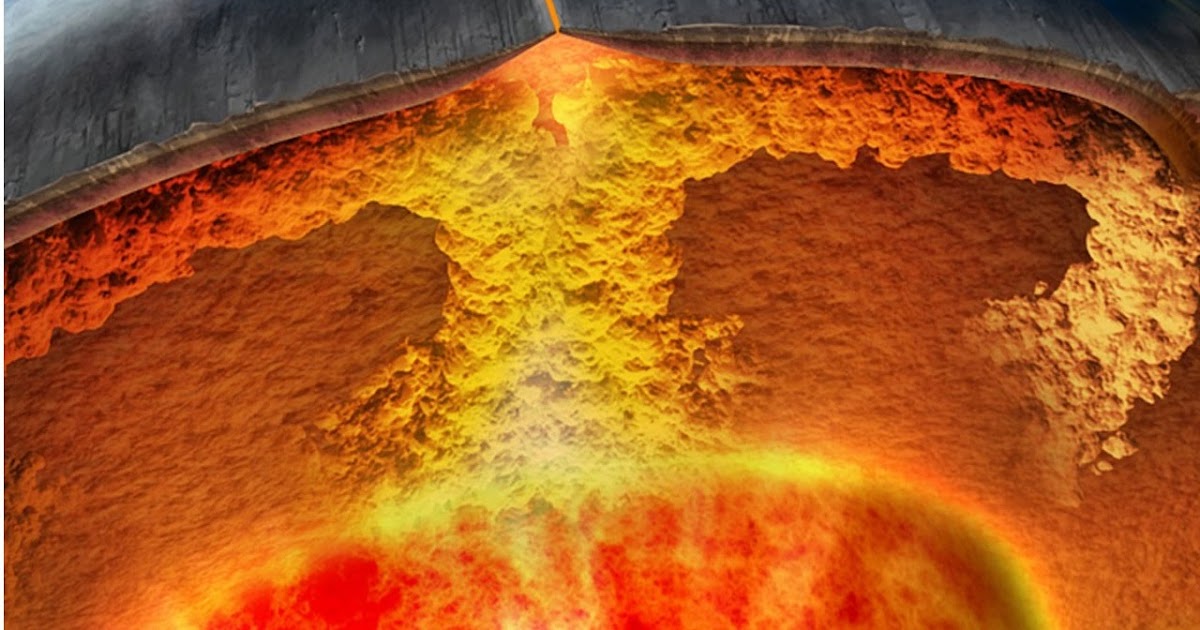
Planetary tectonics is a fascinating field that explores the dynamic geological processes occurring on various celestial bodies within our vast universe. From the Earth to Mars, Venus to Europa, and even distant moons like Titan, the study of tectonics unveils the hidden forces shaping these planetary bodies.
In this article, we will delve into the intriguing world of planetary tectonics, discovering ten astounding facts that highlight the diversity and complexity of these geological phenomena. From massive mountain ranges to colossal rift valleys, the surfaces of planets and moons are constantly evolving.
Join us on this celestial journey as we uncover the remarkable processes and structures that have shaped our neighboring and far-off worlds. Get ready to be amazed by the sheer magnitude and beauty of planetary tectonics.
Key Takeaways:
- Planetary tectonics, like plate tectonics, shape Earth’s surface and create massive landforms, volcanic eruptions, and earthquakes. It also influences climate patterns and provides insights into planetary evolution.
- Tectonic activity exists on other celestial bodies, not just Earth. It contributes to the formation of new land and helps scientists understand the geological history and evolution of planets.
Planetary Tectonics Shape the Earth’s Surface
Planetary tectonics, also known as plate tectonics, plays a crucial role in shaping the Earth’s surface. It involves the movement and interaction of large chunks of the Earth’s lithosphere, called tectonic plates. These plates float on the semi-fluid asthenosphere beneath them. Through processes like subduction, spreading, and collision, these plates cause earthquakes, volcanic activity, and the formation of mountain ranges.
Plate Tectonics Exist on Other Celestial Bodies
Planetary tectonics is not exclusive to Earth. It has been observed on other celestial bodies within our solar system. For example, Mars exhibits evidence of past tectonic activity, with the presence of valleys, canyons, and fault lines. Even our moon, though inactive now, has remnants of ancient tectonic activity in the form of scarps and rift valleys.
Tectonic Activity Can Result in Massive Landforms
The dynamic nature of planetary tectonics can lead to the formation of massive landforms. On Earth, tectonic forces have given rise to the Himalayas, the tallest mountain range in the world. Similarly, the Valles Marineris on Mars is a canyon system stretching over 4,000 kilometers, making it one of the largest canyons in the solar system.
Tectonic Activity Can Cause Volcanic Eruptions
Tectonic plate movement is closely associated with volcanic activity. When plates converge or diverge, magma from the Earth’s mantle can rise to the surface, resulting in volcanic eruptions. This phenomenon is evident in the Pacific Ring of Fire, where the majority of the Earth’s active volcanoes are located.
Plate Tectonics Influence Climate Patterns
The movement of tectonic plates can have a significant impact on climate patterns. For instance, the formation of mountain ranges can alter wind patterns and create rain shadows, leading to stark differences in rainfall on either side of a mountain range. Additionally, tectonic activity can affect ocean currents, influencing regional climate variations.
Tectonic Activity Can Trigger Earthquakes
Earthquakes are a direct result of tectonic plate movement. When stress accumulates along plate boundaries, it can be released suddenly in the form of seismic waves, causing the ground to shake. The magnitude and intensity of earthquakes depend on various factors, including the type of fault, the amount of accumulated stress, and the depth of the earthquake’s epicenter.
Subduction Zones Play an Essential Role in Tectonic Activity
Subduction zones, where one tectonic plate moves beneath another, are critical in driving tectonic activity. These zones are responsible for creating deep-sea trenches, volcanic arcs, and high earthquake activity. The subduction of oceanic plates beneath continental plates often results in the formation of coastal mountain ranges.
Tectonic Activity Can Contribute to the Formation of New Land
Plate tectonics not only shape the Earth’s surface but also contribute to the creation of new land. Through processes like seafloor spreading, where new crust is formed at mid-ocean ridges, and the uplift of sediments due to tectonic forces, landmasses can emerge over time. This gradual formation of new land helps shape the geography of our planet.
The Earth’s Lithosphere is Divided into Tectonic Plates
The Earth’s lithosphere, which includes the crust and upper part of the mantle, is divided into several tectonic plates. These plates are not fixed but constantly moving at a rate of a few centimeters per year. The boundaries where the plates interact, such as divergent boundaries, transform boundaries, and convergent boundaries, are hotspots for tectonic activity.
Planetary Tectonics Provide Insights into Planetary Evolution
Studying planetary tectonics not only helps us understand the Earth’s geological history but also provides insights into the evolution of other planets. By studying the terrain, fault lines, and surface features on other planetary bodies, scientists can infer their geological past and gain a deeper understanding of the processes that shape our universe.
Conclusion
In conclusion, planetary tectonics is a fascinating field of study that unveils the dynamic nature of celestial bodies in the universe. From the shifting crusts of Earth to the icy geysers on Saturn’s moon, Enceladus, tectonic activity is responsible for some of the most awe-inspiring phenomena in our solar system and beyond. Through the study of planetary tectonics, scientists can gain insights into the geological processes that have shaped and continue to affect the planets, moons, and even asteroids in our cosmic neighborhood. Each new discovery brings us closer to understanding the intricate workings of the universe and our place within it.
FAQs
1. What is planetary tectonics?
Planetary tectonics refers to the study of geological activity, such as crustal movements, earthquakes, and volcanic activity, on celestial bodies like planets, moons, and asteroids.
2. What causes tectonic activity on planets?
Tectonic activity on planets is primarily caused by the internal heat generated by radioactive decay, as well as the cooling and contraction of planetary interiors over time.
3. Which planetary body has the most active tectonic system?
Saturn’s moon, Enceladus, is known for its highly active tectonic system, which is responsible for the geysers of icy plumes that erupt from its surface.
4. How does planetary tectonics affect the search for extraterrestrial life?
Studying planetary tectonics can provide valuable insights into the potential habitability of celestial bodies, as tectonic activity can drive processes such as the cycling of nutrients and the creation of geothermal energy, both of which are crucial for supporting life.
5. Can tectonic activity lead to the formation of mountains on planets?
Yes, tectonic activity can lead to the formation of mountains on planets. When tectonic plates collide or when one plate is forced beneath another, it can give rise to mountain ranges, just like the Himalayas on Earth.
6. Are there any other celestial bodies with tectonic activity aside from planets?
Yes, besides planets, moons such as Jupiter’s moon, Io, and Neptune’s moon, Triton, exhibit tectonic activity, showcasing the dynamic nature of these celestial objects.
Planetary tectonics shape celestial surfaces, but that's just scratching the surface! Dive deeper into Earth's dynamic crust with intriguing facts about crustal deformation. Uncover secrets behind seismic activity and its far-reaching effects. Explore volcanism's role in sculpting landscapes across our solar system. Embark on a journey through these fascinating geological phenomena and gain a newfound appreciation for the forces that mold our world.
Was this page helpful?
Our commitment to delivering trustworthy and engaging content is at the heart of what we do. Each fact on our site is contributed by real users like you, bringing a wealth of diverse insights and information. To ensure the highest standards of accuracy and reliability, our dedicated editors meticulously review each submission. This process guarantees that the facts we share are not only fascinating but also credible. Trust in our commitment to quality and authenticity as you explore and learn with us.


